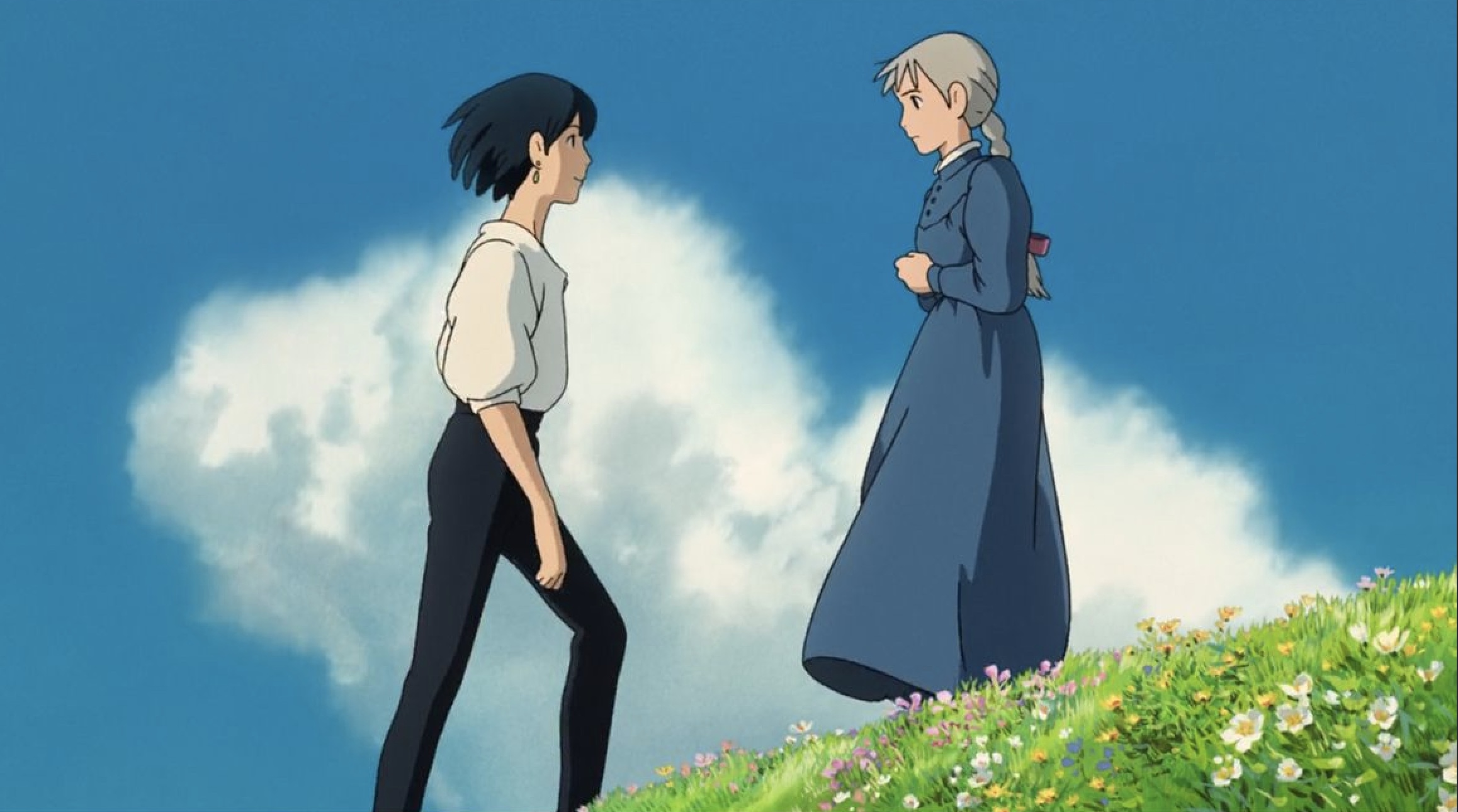It begins and ends with the titular castle. Throughout “Howl’s Moving Castle,” the lumbering steampunk behemoth undergoes many physical changes, whether it be the shedding of its bulky exterior or the polishing of its teeming interiorities. And though it can’t talk or cast spells the same way its occupants do, the castle remains vital to the story, acting as a figuration of the literal and symbolic changes to come.
An array of characters enter and exit the mammoth of a home, and with each transposition, we learn more about them. The protagonist Sophie is a hatter who wraps herself in work as a way to lay aside her insecurities and concerns. Where Sophie is mature, Howl is vain and adolescent-like. The shape-shifting wizard takes pride in his looks and abilities but possesses fears outgrowing his cowardly, immature nature. The two’s foil and commonality are expected, but the patient exhuming of these fated souls is a true accomplishment.
“Howl’s Moving Castle” also sees Miyazaki working with an endearing sundry of characters. The witches, demons and humankind that occupy this world all feel distinct, not just in design, but in wellspring and incentive as well. Even secondary characters carry a considerable amount of heft and memorability. This doting attention is why characters like Totoro from “My Neighbor Totoro”, No-Face from “Spirited Away’’ and Calcifer from “Howl’s Moving Castle” have become unmistakable iconography.
As the release of Hayao Miyazaki’s next film, “The Boy and the Heron” draws closer and Studio Ghibli Fest continues, there couldn’t be a more apt time to revisit 2004’s “Howl Moving Castle.” What immediately separates “Howl’s Moving Castle” from the director’s other accomplished works is its elusivity. The narrative’s real strengths come from the culmination of subtleties and ambiguities. Whenever these opacities and occasional jumble seem out of hand, the film makes sure to remind us of its grasp on lucidity, much like how the logic behind dreams work.
With the film largely exploring the vanity of war, how the director handles conflict and antagonism becomes an impressive feat of character work. Miyazaki, a life-long pacifist, developed the film in response to the US invasion of Iraq. So despite the clear frustration channeled into the story, there is a profound decision to never condemn one side or one individual.
Even Howl, whose suavity and moodiness charm audiences, has to reckon with his role in the war. Characters like the Witch of the Waste clearly align on one side of the moral continuum, but never are relegated to representing one ideology or denied dimension. Miyazaki leaves room for the gray, and by doing so, elicits reflection in the viewer. It’s a welcome contrast to the many Western animations where good means good and bad means bad.
In light of this war, and the greed and naivety that bred it, “Howl’s Moving Castle” resonates with a positive sentiment where compassion triumphs and life is celebrated. To sweeten the deal, the message is embroidered with ornate animation (perhaps Miyazaki’s most lush) and Joe Hisashi’s spirited score. It’s these embraced tendencies of Miyazaki’s work that ultimately allows his message to resonate so strongly among all ages, and from the most casual to keen movie-goers.
So like his work before and after, “Howl’s Moving Castle” can only be summarized and touted as wholly “Miyazaki.” No one else is able to navigate such universal ideas with aged maturity and youthful imagination.








